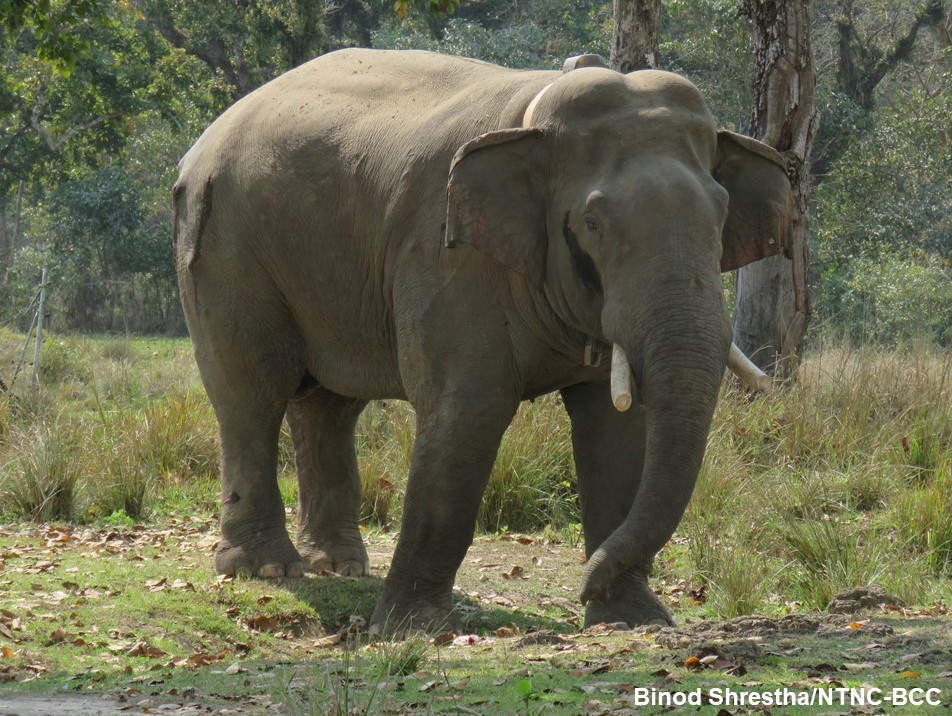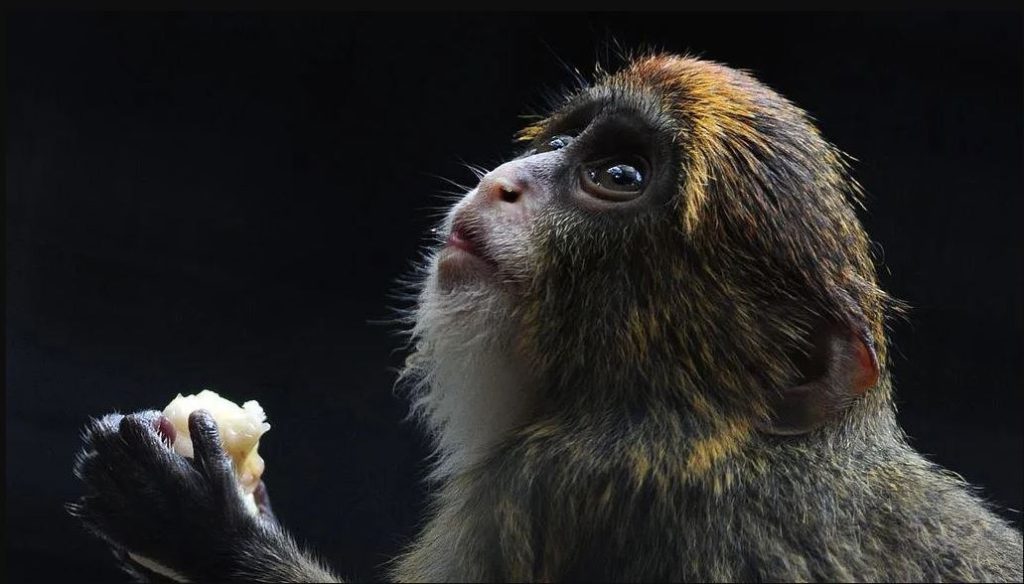Re-visiting Urgency of Elephant Conservation in Nepal

 Elephants which are truly majestic and highly adored megaherbivores wildlife belonging to family Elephantidae play a significant role in the ecosystem they inhibit and are considered as “ecological engineers”. To honor their contribution in the ecosystem and protect world’s elephant population, each year August 12 is celebrated as World Elephant Day. Amidst high conservation priorities, they are under tremendous threat and hence require urgent and extensive conservation safeguard measures.
Elephants which are truly majestic and highly adored megaherbivores wildlife belonging to family Elephantidae play a significant role in the ecosystem they inhibit and are considered as “ecological engineers”. To honor their contribution in the ecosystem and protect world’s elephant population, each year August 12 is celebrated as World Elephant Day. Amidst high conservation priorities, they are under tremendous threat and hence require urgent and extensive conservation safeguard measures.
The planet hosts African elephant (Threatened -IUCN Red List) which are found in African continent south of Sahara and Asian elephant (endangered -IUCN Red List, Annex I-CITES, protected -National Parks and Wildlife Conservation Act,1973) which are mostly confined to Southeast Asia including Nepal.
Habitat, Current Status and Population Distribution
Wild elephants in Nepal are distributed in four isolated sub populations namely Eastern populations in Koshi Tappu Wildlife Reserve and Jhapa district; Central population in Chitwan National Park and Parsa National Park, Western population in Bardiya National Park and surrounding areas; and Far-western population in Suklaphanta National Park and surrounding areas. These wildlife inhibit wide range of habitats including grasslands, forests and swampy areas. As per estimation done DNPWC in 2008 the country hosts approximately 2500km2 of elephant range with 109-142 individuals. While a total 197 individuals are in captivity.
Why are elephant important?
Elephants as ecosystem engineers
Elephants are the most intelligent creature whom we share planet with. These keystone species play a significant role in ecosystem they thrive in. Hence, popularly known as ecosystem engineers.
They create and maintain ecosystems by physically changing habitats. When elephants feed upon small trees and their parts, they preserve the grasslands. As grasses need plenty of sunlight to survive when elephants feed on small trees and their parts, it helps the sunlight to penetrate in the ground. On the other hand, when elephants feed on grass, they create gap in the vegetation which allows new flora to grow and create pathways for small fauna for their use. Most of the time they produce new habitats for small fauna and hence considered as friends of them. Lizards show strong preference for elephant damaged trees as they contain high number of insects. The difference in abundance and species richness in damaged areas which might be due to engineering by elephants helps in generating new habitat for a diverse array of frog species.
The tusk of the elephant which is used for defense, lift and move objects is too used during the harsh climatic condition like drought to dig holes to find underground water not only for itself but for other creatures sharing habitat with it too.
Elephant dung as a resource
Elephant dung is absolutely valuable resource. Currently worldwide 20% of the paper products come from elephant dung. In various countries including Nepal many people have turned the business out of the elephant dung. Each elephant eats in between 100 to 125 pounds of food per day which mostly includes grasses, plants, small trees and their parts and excrete for about 10 times a day. Since elephants eat tough and fibrous food most of which passes through their body undigested, the dung contains lots of broken-down plant fibers. These dungs are further processed to make a high-quality paper. This activity directly saves the indigenous tree species from which paper is made further making the planet green and creates employment opportunity through creating business.
The seeds that comes within the foods are passed undigested due to weak digestive system which further grows and helps to revive the landscape by dispersing the seeds elsewhere. This boosts green environment. The dung is also the great fertilizer used to make excellent compost.
Worldwide, elephant dung coffee is one of the most expensive beverages. Initially the elephants are fed coffee beans which are further picked up and processed to make coffee.
Cultural Importance
Elephants are integral culture in various parts of the world and regarded as symbol of strength and status. Hindu regard elephant as incarnation of Lord Ganesh, a god with elephant’s head and hence worship elephant. However, elephants are featured in various other religions except Hinduism like Buddhism, Islamic tradition, Judeo-Christian tradition, Chinese Zodiac. Elephants have appeared in various religious books “granthas” myths, stories and highly used in religious ceremonies.
Research and monitoring
During research and monitoring activities in the dense forests where travelling by vehicles is not possible captive elephants are used. Elephants are used for counting and monitoring of wild animals like rhino, tigers, patrolling, captive breeding program, anti -poaching surveillance, monitoring and capturing problematic animals, evacuating trapped animals, conservation education and special ceremonies.
Tourism
Elephants based tourism industries are one of the highly flourishing tourism activities which mostly include elephant polo, elephant bath and elephant safari.
Major threats
Elephants are believed to have no natural predators but sometimes big carnivores prey on young or weak elephants. Except the natural death, the major reason for elephant loss is conflict with human beings, forest corridor fragmentation and degradation. Forest corridors which are vital link for migrating elephants from one place to another are being fragmented into smaller areas. The increased human population coupled with forest and grassland depletion leads to habitat loss of elephants. Captive elephants suffer from chronic health problems such as tuberculosis, arthritis and foot abscesses which nearly lead to premature death.
Human-Elephant Conflict (HEC)
Human Elephant Conflict (HEC) is a burning issue in biodiversity conservation. Being a long-range species, elephants frequently come into contact with human beings in the quest of food. The country’s forest corridor in the Southern belt are important link for migrating elephants in between Indo- Nepal transboundary areas which makes HEC a transboundary issue. With increased fragmentation of the remaining forest patches and migration of elephant population from India, the country is facing repeated HEC. Elephants have been recognized as a problematic animal especially outside the protected areas because of their tendency of destroying the crops in enormous scale which makes HEC more challenging. Due to retaliatory activities undertaken by local people in response to the damage to the crops or home done by elephants, Nepal has continued to lose the elephant population. Local people shoot the elephants that enter in their property and electrocute them to death. Comparing the annual death toll to total population of elephants, the death rate seems to be alarming. The death number can’t be easily recovered by newly born elephants’ number as they have the longest gestation period of 18-22 months.
Illegal Hunting and Poaching
Illegal hunting and poaching prevail frequent in African countries than Asian countries as Asian females are tuskless. Nepal has almost no elephant poaching incidents but neighbor country has alarming rate of illegal hunting and poaching. The elephants are poached for its ivory, skin, hair etc. Ivory is the most precious part of an elephant. The ivory carving is cultural practice in China and surrounding Asian countries over 2,000 years. Ivory pendent are highly used by elephant monk in Thailand and other parts of the world. Thousands of elephants are slaughtered to please religious devotion.
National Effort to save these ecosystem engineers
The Government of Nepal (GoN), over the years has been trying to address the conservation of this endangered species through various approaches. The elephant Management Rules, 2020 B.S was started to manage and regulate captive elephants. The rules included about elephant health care, elephant camp, and proper use of elephants without compromising on their health status. Few other policy and action plans have also been developed.
Domesticated Elephant Management Policy, 2060
This policy mainly aims to maximize economic and environmental benefits, minimize negative impacts in biodiversity through proper management of domesticated elephant involving private sectors. The policy equally focuses on equitable distribution of economic benefits arising from management of domesticated elephants.
Elephant Conservation Action Plan (2009-2018)
This plan reflects the effort of GoN to conserve these flagship species from extinction and immediately address habitat loss and control HEC through viable measures. The plan highly emphasizes on landscape level conservation by creating/maintaining ecological corridors, so that fragmented elephant populations can be linked for genetic viability.
Elephant Breeding Center (EBC) and Elephant Camps (Hattisars)
For the proper captive elephant management, the GoN established the EBC in Chitwan in 1985 when 16 elephants from India, 2 from Thailand, and 2 from Myanmar were gifted to Nepal. After the establishment of breeding center till date a total 55 elephants are successfully born and managed in the center. EBC helps in scientific research and gene pool conservation through active breeding program. EBC also fulfills elephant requirement for sweep operation and patrolling. The lowland of the country consists of six government owned Hattisars, the elephant of which are primarily used in capturing problematic animals, wildlife rescue operations and religious ceremonies.
Others
Problematic elephants causing conflict in and around the community are radio collared, tracked and monitored in a regular basis. Solar fencing, wall fencing in the conflict areas have been increased. Besides these, awareness program in the community regarding elephant conservation, conflict mitigation is also conducted.
Way Forward
Conserving elephant isn’t just about conserving the elephant but it’s about conserving the whole ecosystem. Fragmented and destroyed habitats should be restored and managed immediately. Moreover, elephant corridors shouldn’t be disturbed. HEC being a transboundary issue with Nepal and India involving, both the countries should put joint effort and should seek the methods to minimize the losses by modernizing mitigating measures involving local community in biodiversity conservation.
Author works as Program Officer in NTNC-BCC.

 Nature Khabar
Nature Khabar




Feedback